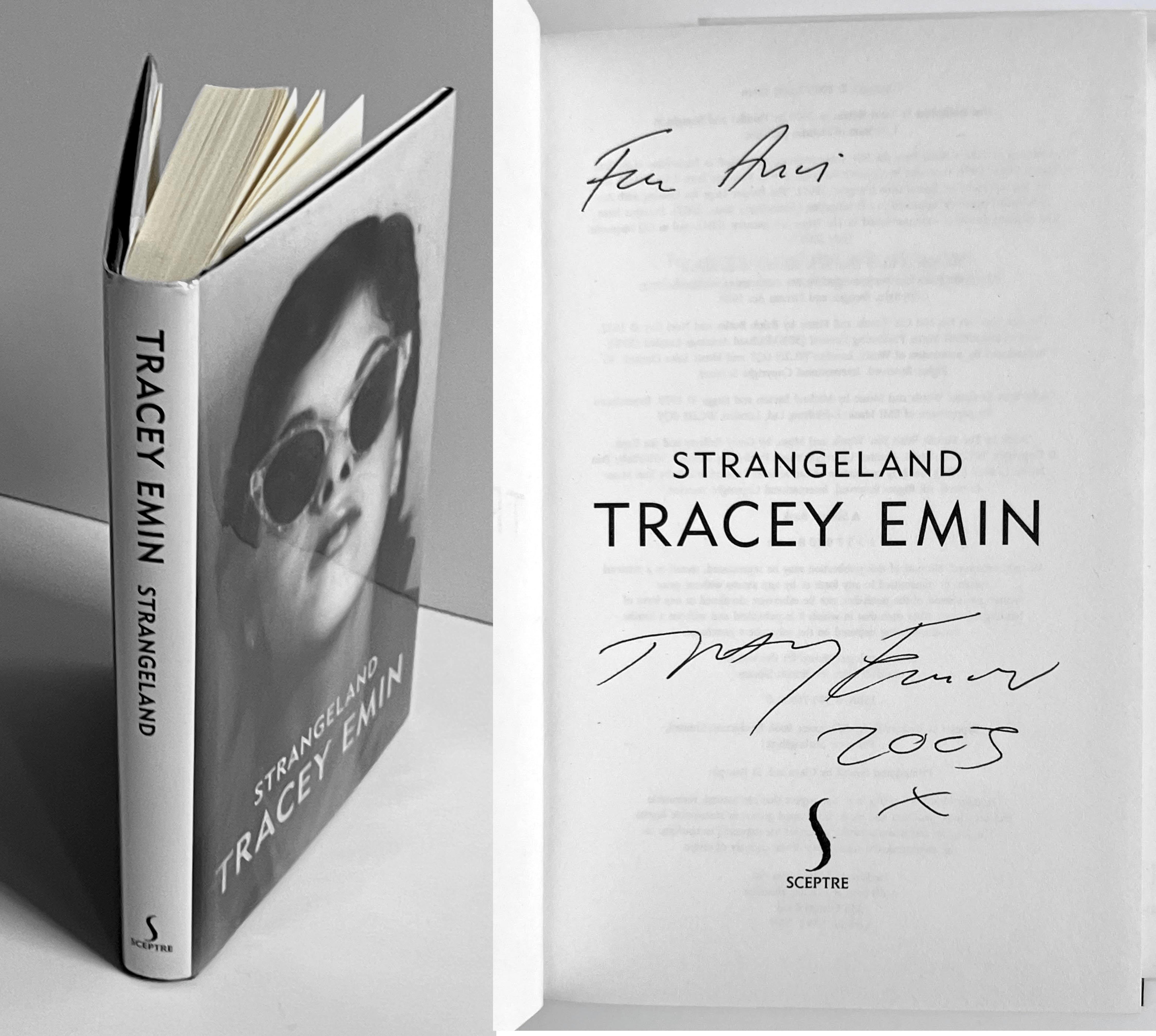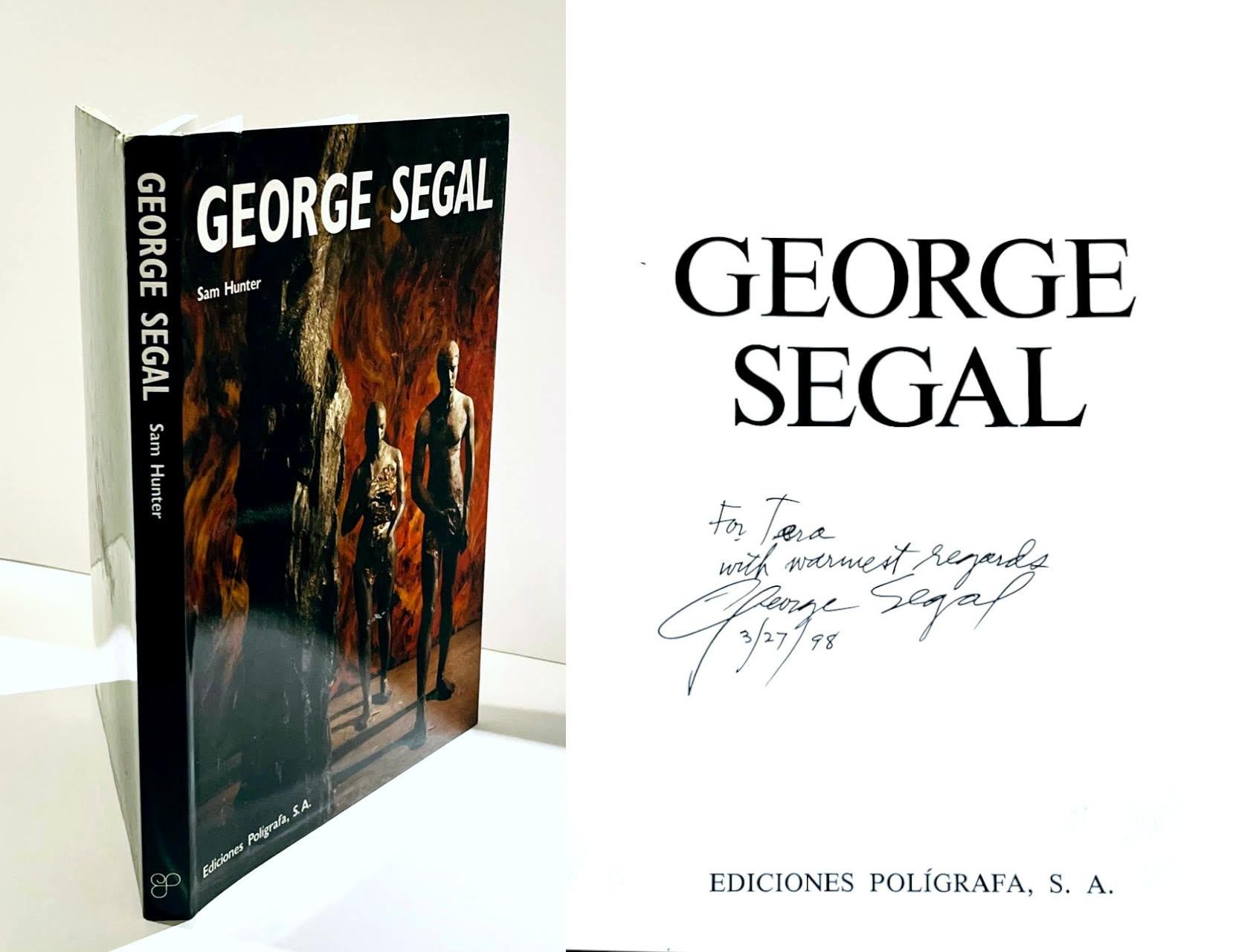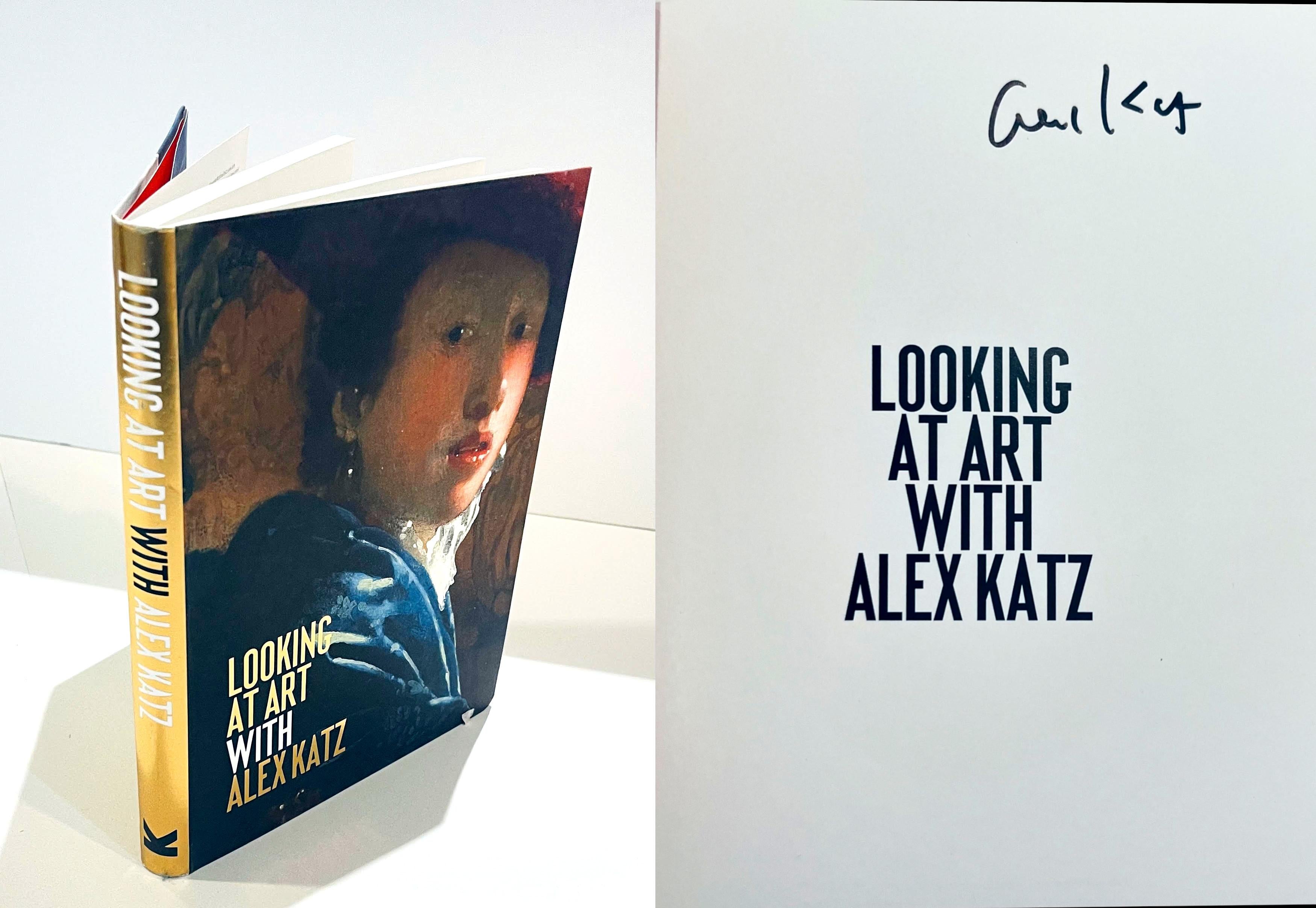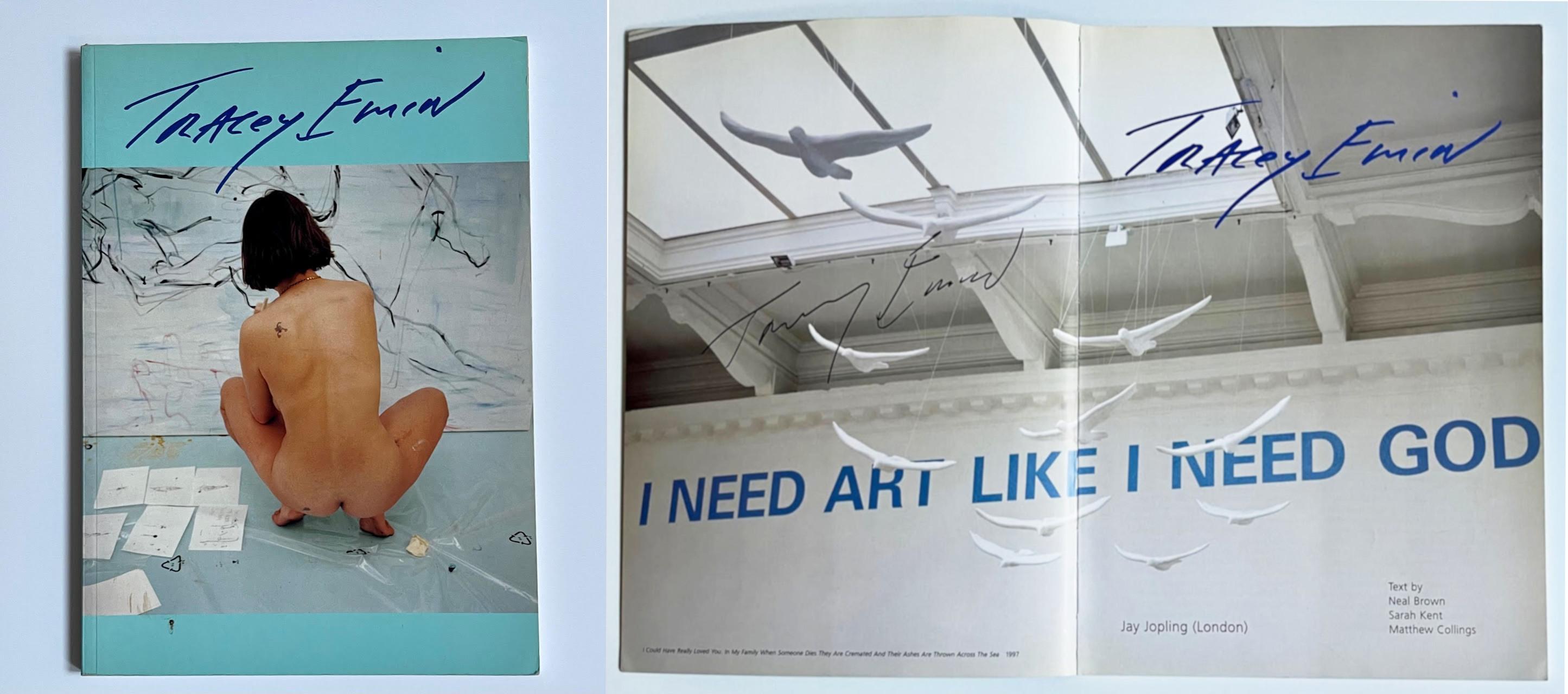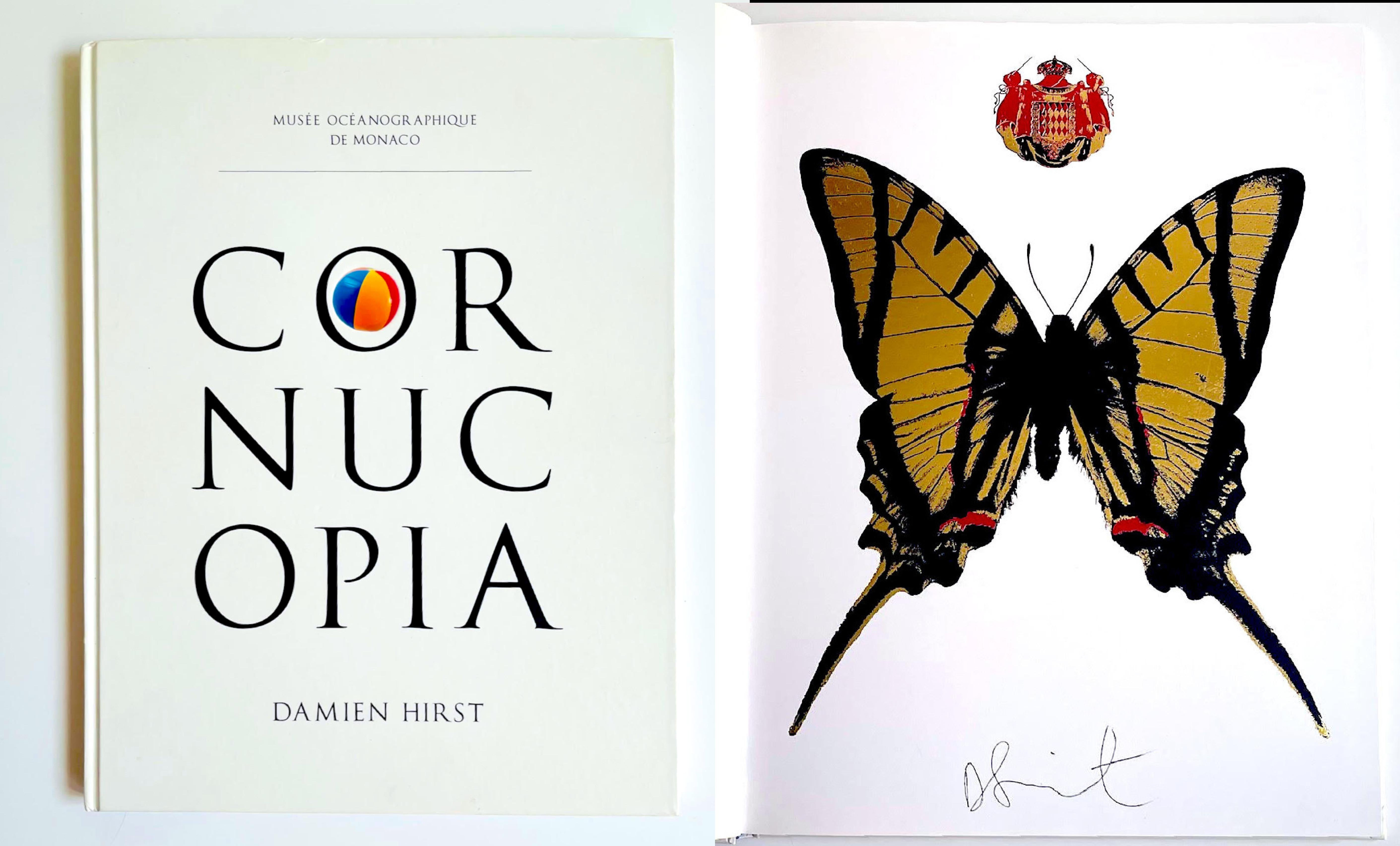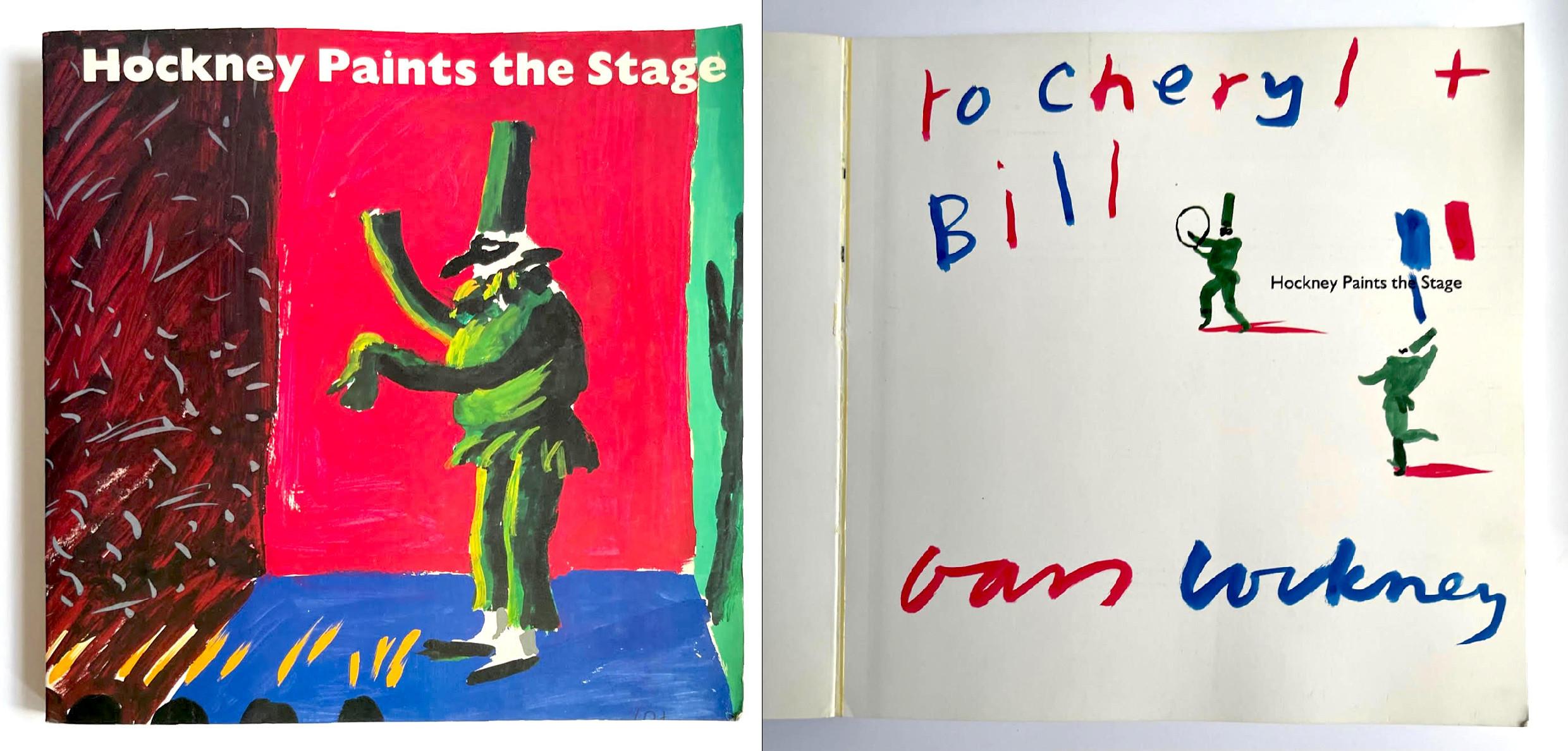Items Similar to Kerouac's On the Road (10 sandwiches with bread and salami), SIGNED by Ed Ruscha
Want more images or videos?
Request additional images or videos from the seller
1 of 8
Ed RuschaKerouac's On the Road (10 sandwiches with bread and salami), SIGNED by Ed Ruscha2010
2010
About the Item
Ed Ruscha
On the Road (10 sandwiches with bread and salami) (Hand signed and dated by Ed Ruscha), 2010
Letterpress on paper with tipped-in die-cut photograph
Hand signed and dated 2010 by Ed Ruscha on the front, Edition of 100 (unnumbered)
26 × 18 inches
Unframed
Provenance
Acquired directly from Gagosian Gallery (sold out)
Hand signed and dated 2010 by Ed Ruscha on the front.
Limited edition of 100 hand signed (unnumbered)
The text is printed letterpress, while the die-cut photograph of a classic 1949 Hudson Commodore is tipped in by hand to a blind debossed area of the same shape.
Includes quotation by Jack Kerouac (author of On the Road) and photograph by Ruscha.
Quote reads:
"First I bought a loaf of bread and salami and made myself ten sandwiches to cross the country on."
About Ed Ruscha:
There are things that I’m constantly looking at that I feel should be elevated to greater status, almost to philosophical status or to a religious status. That’s why taking things out of context is a useful tool to an artist. It’s the concept of taking something that’s not subject matter and making it subject matter.
—Ed Ruscha
At the start of his artistic career, Ed Ruscha called himself an “abstract artist ... who deals with subject matter.” Abandoning academic connotations that came to be associated with Abstract Expressionism, he looked instead to tropes of advertising and brought words—as form, symbol, and material—to the forefront of painting. Working in diverse media with humor and wit, he oscillates between sign and substance, locating the sublime in landscapes both natural and artificial.
In 1956, Ruscha moved from Oklahoma City to Los Angeles, where he attended the Chouinard Art Institute. During his time in art school, he had been painting in the manner of Franz Kline and Willem de Kooning, and came across a reproduction of Jasper Johns’s Target with Four Faces (1955). Struck by Johns’s use of readymade images as supports for abstraction, Ruscha began to consider how he could employ graphics in order to expose painting’s dual identity as both object and illusion. For his first word painting, E.Ruscha (1959), he intentionally miscalculated the space it would take to write his first initial and surname on the canvas, inserting the last two letters, HA, above and indicating the “error” with an arrow. After graduation, Ruscha began to work for ad agencies, honing his skills in schematic design and considering questions of scale, abstraction, and viewpoint, which became integral to his painting and photography. He produced his first artist’s book, Twentysix Gasoline Stations—a series of deadpan photographs the artist took while driving on Route 66 from Los Angeles to Oklahoma City—in 1963. Ruscha since has gone on to create over a dozen artists’ books, including the 25-foot-long, accordion-folded Every Building on the Sunset Strip (1966) and his version of Kerouac's iconic On the Road (2009). Ruscha also paints trompe-l’oeil bound volumes and alters book spines and interiors with painted words: books in all forms pervade his investigations of language and the distribution of art and information.
Ruscha’s paintings of the 1960s explore the noise and the fluidity of language. With works such as OOF (1962–63)—which presents the exclamation in yellow block letters on a blue ground—it is nearly impossible to look at the painting without verbalizing the visual. Since his first exhibition with Gagosian in 1993, Ruscha has had twenty-one solo exhibitions with the gallery, including Custom-Built Intrigue: Drawings 1974–84 (2017), comprising a decade of reverse-stencil drawings of phrases rendered in pastel, dry pigment, and various edible substances, from spinach to carrot juice. The first retrospective of Ruscha’s drawings was held in 2004 at the Whitney Museum of American Art. Ruscha continues to influence contemporary artists worldwide, his formal experimentations and clever use of the American vernacular evolving in form and meaning as technology and internet platforms alter the essence of human communication. Ruscha represented the United States at the 51st Venice Biennale (2005) with Course of Empire, an installation of ten paintings. Inspired by nineteenth century American artist Thomas Cole’s famous painting cycle of the same name, the work alludes to the pitfalls surrounding modernist visions of progress. In 2018 Ruscha’s Course of Empire was presented concurrently with Cole’s at the National Gallery in London.
- Courtesy of Gagosian Gallery
- Creator:Ed Ruscha (1937, American)
- Creation Year:2010
- Dimensions:Height: 26 in (66.04 cm)Width: 18 in (45.72 cm)
- Medium:
- Movement & Style:
- Period:
- Condition:
- Gallery Location:New York, NY
- Reference Number:1stDibs: LU1745213552702
About the Seller
5.0
Platinum Seller
These expertly vetted sellers are 1stDibs' most experienced sellers and are rated highest by our customers.
Established in 2007
1stDibs seller since 2022
289 sales on 1stDibs
Typical response time: 1 hour
- ShippingRetrieving quote...Ships From: New York, NY
- Return PolicyA return for this item may be initiated within 1 day of delivery.
More From This SellerView All
- The MCA Wrapped, 1969 (Limited Edition of 300) gold foil stamp museum provenanceBy ChristoLocated in New York, NYChristo The MCA (Museum of Contemporary Art) Wrapped, Chicago, 1969, 2019 Limited Edition Four-color offset lithograph on 110 lb. Crane Lettra Cover stock, with an elegant gold foil...Category
2010s Pop Art Figurative Prints
MaterialsFoil
- Hockney's Alphabet, portfolio of 26 lithographs signed by Hockney and 23 writersBy David HockneyLocated in New York, NYDavid Hockney Hockney's Alphabet, 1991 26 color lithographs in Fine Art Cartridge paper bound in quarter vellum with handmade Fabriano Roma paper sides, housed in matching box; signed by David Hockney and most contributors in ink and numbered 178 in black ink on the justification page Numbered 178/250 Hand signed by 24 of the contributors, including David Hockney and Steven Spender 12 5/8 x 9 5/8 inches Bound in book and held in slipcase This portfolio features 26 color lithographs in Fine Art Cartridge paper with full margins, bound as issued, in quarter vellum with handmade Fabriano Roma paper sides, in original grey slipcase. It is signed by David Hockney (the artist) and most contributors in ink and numbered 178 in black ink on the justification page, from the edition of 250, with full text and title page, published by Faber & Faber, London, text edits by Stephen Spender, who also signed. It is illustrated by David Hockney, hand signed by David Hockney and Stephen Spender and also signed by the following contributors: Douglas Adams, Martin Amis, Julian Barnes, William Boyd, Margaret Drabble, Patrick Leigh Fermor, William Golding, Seamus Heaney...Category
1990s Pop Art Abstract Prints
MaterialsInk, Mixed Media, Vellum, Lithograph, Board, Pencil, Offset
- The Wrapped (MCA), Chicago 1969 (Limited Edition of 200, Hand Signed by Christo)By Christo and Jeanne-ClaudeLocated in New York, NYChristo and Jeanne-Claude The Wrapped (MCA), 1969 (Hand Signed), 2019 Four-color offset lithograph on 110 lb. Crane Lettra Cover stock, with an elegant gold foil stamp. Hand Signed by Christo 22 3/5 × 30 inches Edition of 200 Hand-signed by artist, Signed in graphite pencil by Christo on the front. Also elegant gold foil stamp. Unnumbered from the documented limited edition of only 200 Published by Museum of Contemporary Art, (MCA) Chicago Unframed A great gift for anyone with ties to Chicago! This limited-edition, hand signed offset lithograph on 110 lb. Crane Lettra Cover stock commemorates Christo's exhibition "Wrap In Wrap Out", which took place at the MCA’s original location on 237 East Ontario Street, Chicago. The project became the first public building Christo and his wife, Jeanne-Claude, wrapped in the United States. In an illuminating 2010 article entitled, "A daring plan to wrap a Chicago museum raises city ire – and makes art history," author Robin Amer recounts how Christo came to choose Chicago -- or rather how Chicago chose New York based artist Christo: "During a recent conversation he [Christo] ticked off the list of buildings he approached in downtown Manhattan starting in 1961. “Number 2 Broadway, number 20 Exchange Place,” he recalled. “We tried to wrap a building at Times Square. They all said no. Christo said he quickly realized that his best hope to wrap a building – his first in North America – would be to wrap a museum, which might be more amenable to his strange proposition.Christo and Jeanne-Claude approached New York’s Museum of Modern Art in 1967. The museum was interested, but Christo said they failed to secure permission for the show from the New York Fire...Category
1960s Pop Art Abstract Prints
MaterialsFoil
- Five Hearts for Channel 13 (Public Television), deluxe hand signed limited ed.By Jim DineLocated in New York, NYJim Dine Love for Channel 13 Lithograph. Hand signed and numbered recto 27 × 21 1/2 inches Edition 185/200 Signed and numbered 185/200 in graphite pencil on the recto Unframed Rarel...Category
1960s Pop Art Figurative Prints
MaterialsLithograph, Offset, Pencil
- Madonna NYC 83 Figurative Pop historic Pop poster hand signed by photographerBy Richard CormanLocated in New York, NYRichard Corman Madonna NYC 83, 2013 Offset lithograph poster on high quality thin card paper (hand signed by the photographer) Hand signed by Richard Corman on the lower left front 3...Category
2010s Pop Art Portrait Prints
MaterialsOffset, Pencil, Lithograph
- Sister Corita (vintage hand signed poster) Images Gallery rarely found signedBy Corita KentLocated in New York, NYSister Mary Corita Kent Sister Corita hand signed poster, 1985 Offset Lithograph Signed in pencil by the artist on the lower right 24 x 18 inches Unframed This offset lithograph post...Category
1980s Pop Art Abstract Prints
MaterialsPencil, Lithograph, Offset
You May Also Like
- Cow Going Abstract by Roy Lichtenstein (after)By Roy LichtensteinLocated in London, GBOffset lithograph printed in colours on wove paper 30 3/4 × 26 in 78.1 × 66 cmCategory
1980s Pop Art Figurative Prints
MaterialsLithograph
- The souper dressBy Andy WarholLocated in Jerusalem, ILA wonderful piece of unknown edition by Andy Warhol. A silkscreen print on a Cellulose and Cotton dress. Fearing the artist's trade mark Campbell's soup can. In very good condition.Category
1960s Pop Art Figurative Prints
MaterialsTextile, Screen
- Flowers, (After) Andy Warhol -Pop Art, Tapestry, Edition, Contemporary, DesignBy Andy WarholLocated in Zug, CH(After) Andy Warhol Flowers, 1968 Hand Woven Wool Tapestry 183 x 183 cm (72 x 72 in) Edition of 20 With the knotted name ‘ANDY WARHOL’ lower right and the embroidered annotation ‘WARHOL ©’ on the reverse Published by Modern Master Tapestries, NY Throughout art history, the flower and its symbolism have been a subject matter for many renowned artists. Andy Warhol explored the qualities of the flower image through his Pop Art prism in the Flower series of 1964, thus creating cartoon-like symbols that would be instantly recognized. The 1964 Flower series became one of his most iconic and successful works. Based on a discovered photograph of hibiscus blossoms, Warhol drenched the flowers’ floppy shapes with a variation of vibrant colors, transforming them into psychedelic indoor décor. Playing with traditional art historical themes, Andy Warhol gave a particular twist to this historically accepted symbol of life. The electric colors of his flowers, drawn from a darker and rich undergrowth background might be the indicator of an extreme vision of life, a life lived on the edge. Andy Warhol (1928-1987) was an American artist, a leading figure of the Pop Art movement. Using a variety of media materials from photographs up to computer-generated art, Warhol's works explore the relationship between artistic expression, celebrity, culture and advertisement that flourished by the 1960s. Emerging from the poverty and obscurity of an Eastern European immigrant family in Pittsburgh, Warhol became a charismatic magnet for bohemian New York. In 1960, he began to produce his first canvases depicting Popeye and Dick Tracy. After Marilyn Monroe’s death in August 1962, he started working from snapshots of the star’s already legendary face, which had been widely distributed by the world’s press. His choice of subjects clearly relates to an obsession with demise – his Marilyns, his Ten Lizies (created when the actress Elizabeth Taylor was seriously ill), and also his Elvis. Part of the “Death and Disaster” series, Andy Warhol´s...Category
20th Century Pop Art Figurative Prints
MaterialsTapestry, Wool
- Feminine King-KongBy ErróLocated in Malmo, SEPublisher GKM. Enamel on steel. Unframed. Edition: 8 ex + 4 EA Signed by the artist. Free shipment worldwide. “I paint because painting is a private Utopia,” Erró writes of his art....Category
Early 2000s Pop Art Figurative Prints
MaterialsEnamel, Steel
- Urban Beauty ShowBy ErróLocated in Malmo, SEPublisher GKM. Enamel on steel. Unframed. Edition: 8 ex + 4 EA Signed by the artist. Free shipment worldwide. “I paint because painting is a private Utopia,” Erró writes of his art....Category
Early 2000s Pop Art Figurative Prints
MaterialsEnamel, Steel
- Power PointsBy ErróLocated in Malmo, SEPublisher GKM. Enamel on steel. Unframed. Edition of 8 ex + 4 EA. Signed, titled and dated on the verso. Free shipment worldwide. “I paint because painting is a private Utopia,” E...Category
Early 2000s Pop Art Figurative Prints
MaterialsEnamel
Recently Viewed
View AllMore Ways To Browse
French Modernist From 1940
Original Small Signed Pencil Drawings
Large English Etching
Free People Dress
Ancient Engraving With Animals
Post Modern Cat Sculpture
Sketch Bathe
Picasso Blue Nude Lithograph
Renaissance Dying Hair
Contemporary Asian Woodcut Print
Antique Etching River
Bob Dylan Lithograph
Fifties Women Dress
Japanese Blue Green Landscape Screen
Mucha Champenois
A Nice Spot For Lunch
Karl Xii
Samuel Chamberlain Printmaker
